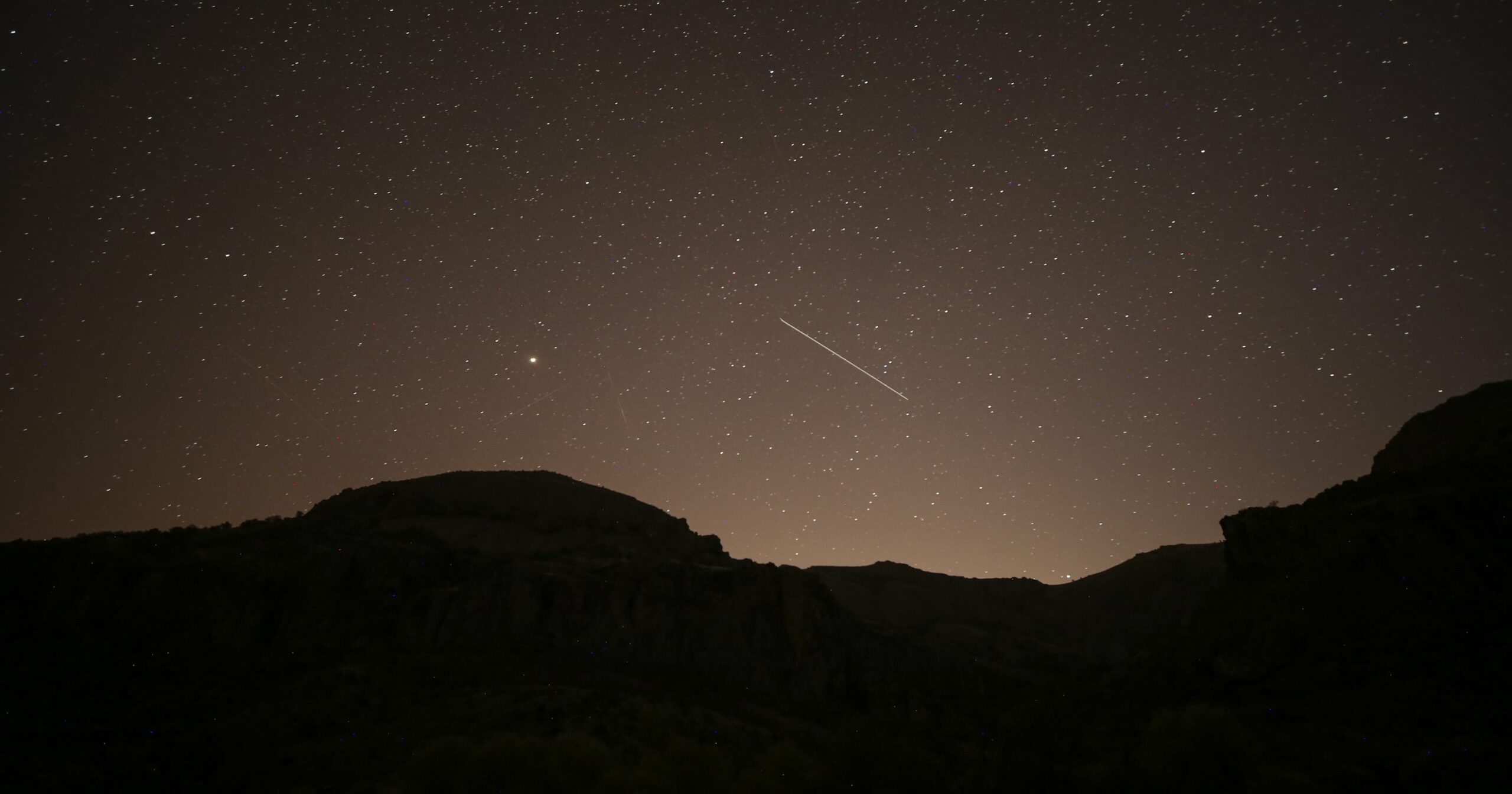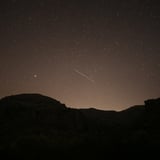It’s already been a big year for celestial sightings, but the astral spectacles aren’t done yet. November promises a Leonid meteor shower that’s supposed to peak in the middle of the month, lighting up the night sky with lots of funky, flaming space junk. Astronomers, astrology nerds, and those who are space-curious will all aim their gazes at the night sky this month to witness the shower, which will be made up of what NASA says are some of the fastest meteors out there, moving at 44 miles per second. (For reference, the slowest meteors travel around seven miles per second.)
The meteor shower on Nov. 17 will be emitting light from the Northern Hemisphere constellation of Leo, hence the astrologically familiar name. The NASA webpage dedicated to the Leonids says meteors are actually just leftover particles and bits from the comets and asteroids that are zipping around our solar system. Aside from their remarkable speed, what makes the Leonid showers special is twofold: they can be colorful (ooo!) because of their fireballs and Earth-grazer meteors (ahh!).
While still stunning, the magic of this year’s Leonids won’t come close to what they produced in 1966, when viewers glimpsed what NASA calls “a spectacular Leonid storm.” Over just a 15-minute period, thousands of meteors fell through the Earth’s atmosphere at such a rate that “they appeared to fall like rain.” Storms like that are rare – they happen roughly every 33 years; the last Leonid storm was in 2002 – but the showers are more common.
The upcoming Leonid meteor shower might be slightly obscured by the glow of an almost-full moon, but read on for more tips about how to view nature’s most spectacular light show next month.
What Is the Leonid Meteor Shower?
Every year, Earth passes through the debris trails of comets that are also circling the sun, made up of dust and particles, NASA writes. When those bits collide with our atmosphere, “they disintegrate to create fiery and colorful streaks in the sky.”
The Leonid meteor shower in particular is produced when Earth passes through debris from a specific comet – 55P/Tempel-Tuttle – “during its highly elliptical orbit around the sun every 33 years,” according to Daisy Dobrijevic at Space.com. “When Earth passes through the comet’s debris, the ‘comet crumbs’ heat up as they enter Earth’s atmosphere and produce impressive ‘shooting stars’ that streak across the sky.” The 55P/Tempel-Tuttle comet is classified as small, measuring just over two miles across. The letter “P” also indicates that it’s periodic, meaning its orbital period is less than 200 years.
The Leonid meteor shower in November will likely feature fireballs and Earth-grazer meteors, which give the Leonids their signature colorful flare. “Fireballs are larger explosions of light and color that can persist longer than an average meteor streak,” NASA says. “This is due to the fact that fireballs originate from larger particles of cometary material. Earth-grazers are meteors that streak close to the horizon and are known for their long and colorful tails.” (You can report a fireball to the American Meteor Society with their very extensive survey.)
How Can I Watch the Leonid Meteor Shower?
Scientists estimate that the Leonids will peak late the night of Nov. 17 until early morning Nov. 18, around 2 a.m. EST. NASA recommends viewing the Leonids starting at about midnight local time in an area that’s “well away from the city or street lights.” Since it will be chilly in the Northern Hemisphere, come prepared for winter temperatures – sleeping bag, blanket, gloves, etc. “Orient yourself with your feet toward the east, lie flat on your back, and look up, taking in as much of the sky as possible,” NASA says. “In less than 30 minutes in the dark, your eyes will adapt and you will begin to see meteors. Be patient – the show will last until dawn, so you have plenty of time to catch a glimpse.”
Meteor showers are named after the constellation that they appear to emanate from, known as the radiant, according to NASA. From where we are on Earth, the Leonids appear to come from the constellation Leo. “To find Leo, first look for the bright star Regulus and then trace the distinctive backward question mark known as ‘the sickle’ which represents the lion’s mane,” according to Dobrijevic.
Dobrijevic also recommends not looking directly at Leo to find the meteors, because “the shooting stars will be visible throughout the sky. Make sure to look around and move your gaze to nearby constellations as meteors further from the radiant tend to have longer trains (glowing trails of debris) and are easier to spot.”
The Leonids are best viewed from the darkest location you can find, but you won’t need any telescopes or binoculars. The secret to a good meteor viewing experience? “Take in as much sky as possible . . . and make sure to allow about 30 minutes for your eyes to adjust to the dark,” according to Dobrijevic. Then lean back and enjoy the show.
When Is the Next Meteor Shower?
Another spectacular meteor storm like what was reported in 1966 likely won’t happen until the 2030s. But rest assured there will be plenty of heavenly action before then, starting with the Geminids (also in November) and the Ursids (in December).
Stay tuned for the Perseids in 2025, which are supposed to peak around Aug. 11 or 12 and are also meant to put on a colorful display.
Emma Glassman-Hughes is the associate editor at PS Balance. In her seven years as a reporter, her beats have spanned the lifestyle spectrum; she’s covered arts and culture for The Boston Globe, sex and relationships for Cosmopolitan, and food, climate, and farming for Ambrook Research.




